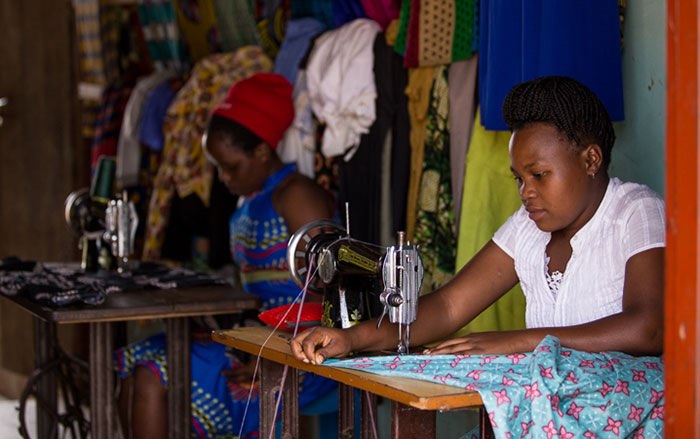First in a series of blog posts on the release of the 2019 Annual Trends and Outlook Report (ATOR) at the ReSAKSS Annual Conference in Lomé, Togo, Nov. 11-13. This year’s ATOR theme is “Gender Equality in Rural Africa: From Commitments to Outcomes.” Read the second post here and the third here.
Across the world, becoming an adult means increased responsibilities and expectations linked to marriage, childbearing and parenting, and supporting oneself and others. Young women and men aged 15-24 are in the process of transitioning to adulthood. This includes preparation for adult responsibilities (e.g., education and making healthy decisions) and beginning to take on adult roles (e.g., work, marriage, parenthood).
In Africa, which has the world’s youngest population, nearly one in five people falls into this age group. Among them, young women have fewer physical assets, such as land and livestock, compared to young men. They also tend to have less schooling, disadvantaging them in terms of continuing education and training opportunities, securing a job, and earning a living. In addition, social norms may lead young women to perform caregiving roles, limiting their ability to earn a paid income. Young men, on the other hand, may be expected to focus on generating income, leaving little to no time for them to be caregivers.
A new study in the 2019 Annual Trends and Outlook Report takes a gendered perspective in considering how best to enhance livelihood opportunities for rural youth. Existing programs tend to focus either on employment and income generation on the one hand, or increasing young women’s empowerment on the other. Few consider how youth livelihoods fit into other aspects of their lives, and most fail to integrate young women’s and men’s distinct needs. Livelihood programs underserve young men when they focus only on vocational skills while ignoring their potential involvement in caregiving and household tasks. They underserve young women when they fail to consider gender-specific constraints, such as restrictions on freedom of movement, childcare responsibilities, and a lack of human and financial capital.
To better guide the transition to adulthood for young women and men, programs need to address limited employment opportunities and household responsibilities together.
This means expanding young women’s economic opportunities to earn an income through education and training. Programs must accommodate women’s needs for safe transportation to school and training locations, child care support, and time for household responsibilities. For young men, this means considering their roles as income-earners and as current or future fathers.
This double-pronged approach considers the complex realities of youth’s lives and can advance gender equality. For example, livelihood programs that consider young men’s involvement at home could pull men into taking care of children and contributing to the time-intensive burden of domestic activities.
Some efforts to strengthen youth livelihoods have already begun addressing employment and reproductive responsibilities of young women in their programming. For example, BRAC’s Empowerment and Livelihoods for Adolescents (ELA) program in Uganda combined training in vocational and life skills. The result? Markedly better livelihood and reproductive health outcomes for young women. BRAC’s success shows the promise of youth livelihoods programs that incorporate household and other outside roles to serve the needs of Africa’s growing youth population. (A large evidence gap remains on the effects of such programs for young men, however.)
By 2030, the global share of Africa’s youth population is projected to increase to 42%. In absolute numbers, the youth population will double between 2015 and 2055, to more than 550 million. Considering the interconnected areas of youth’s lives in their transitions to adulthood can harness the potential of this growing population and open up possibilities for brighter futures.
Audrey Pereira and Emily Myers are Research Analysts with IFPRI’s Poverty, Health, and Nutrition Division (PHND); Jessica Heckert is a PHND Research Fellow.







